Whyalla featured on hit documentary series Australian Story
In September 2018, the ABC’s hit documentary series Australian Story tracked ...
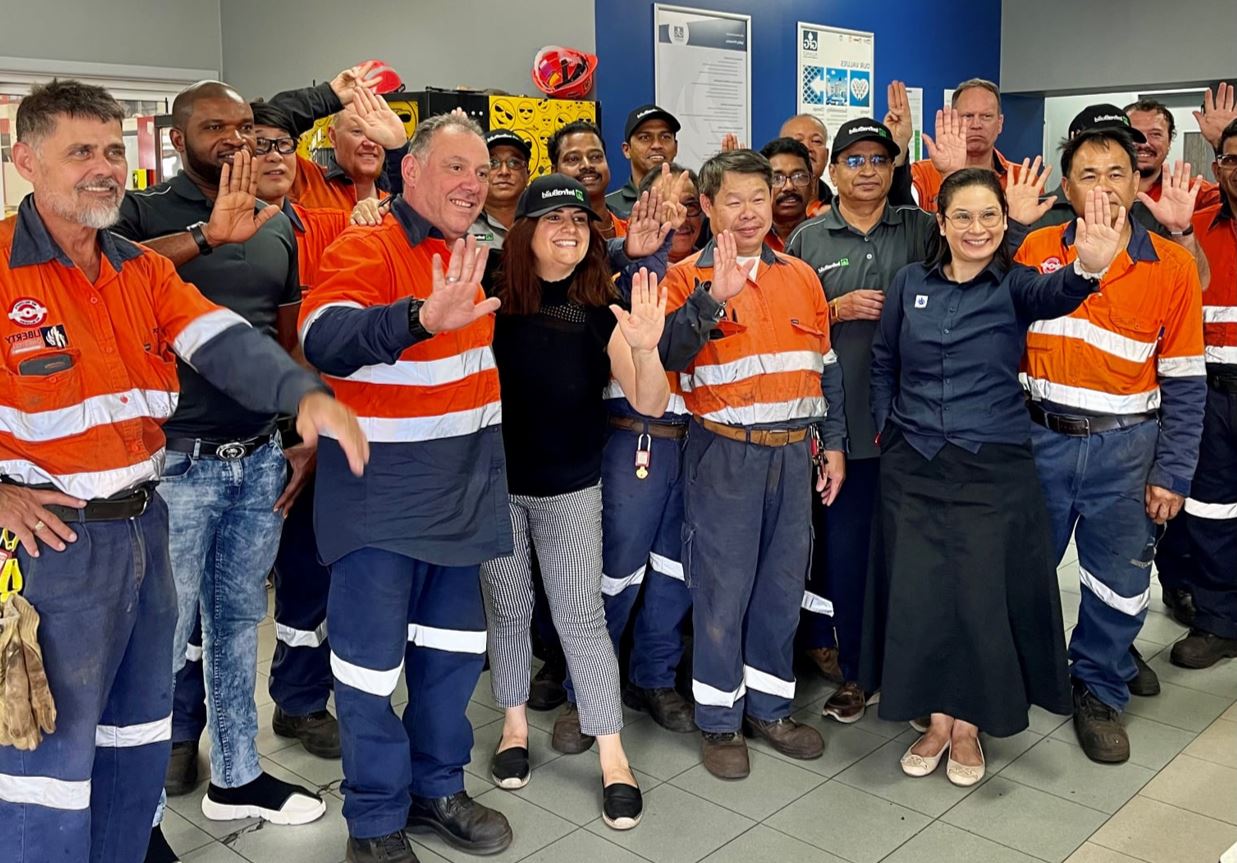
Continuous improvement is core to what we do at GFG. This month we’re taking a look around the world to see what the local teams have be doing to continuously improve their business.
Part of Australia’s InfraBuild business, the Laverton Steel Mill is located in Victoria, and is home to a team of about 450 employees.
The Laverton Meltshop drop out box (DOB) project addressed waste by solving the root cause of major water leaks, wasting as much as 250 kilolitre of makeup water per day, and reduced the consumption of sulphuric acid, used to neutralize lime washed out of the leaking old DOB, by $17,000 per month.
As part of the project, the team also eliminated around $10,000 of monthly repairs to the old DOB and reduced the risk of a carbon monoxide explosion by increasing the DOB volume by 50% to increase dwell time, allowing more complete combustion.
Typically these kinds of projects are outsourced, but in the spirit of continuous improvement the Laverton team accepted the challenge and made a great success of it. They showed ingenuity, applied their experience with the equipment, and persevered when challenges arose.
The original DOB was designed in the late eighties, when it wasn’t anticipated that the plant would produce more than 500,000 tonnes of steel per year. These days the Laverton team produces closer to 780,000 tonnes per year, and they’re looking to extend that.
The DOB was struggling to cope and as a result, the water-cooled panels regularly failed, and water leaks developed.
The design was also pretty rigid, meaning that simple maintenance was difficult. As part of the team’s design review they found that for the oxygen intensity and production rate, the volume of the box was too small, which didn’t allow sufficient retention time for the carbon monoxide from the furnace to sufficiently combust to carbon dioxide.
The challenge put to the maintenance team was to develop a timely, cost-effective solution in-house. The Laverton Maintenance Superintendent, supported by the Meltshop technical team, and two external experts, designed an entirely new drop house box from scratch.
Two local Melbourne companies were commissioned to fabricate the DOB frame, water cooled panels, and fume elbows; the hydraulic cylinder for the moveable elbow was fabricated in Tasmania; and the Laverton boiler making team fabricated the water supply and return piping. Altogether, achieving a significant cost saving for the project.
The Laverton electrical team re-routed power and signal cabling and termination boxes. The same was done for all gas and utilities pipelines, and the refractory team cast the lower heat resistant panels.
During the December 2019 and April 2020 shutdowns, the maintenance team demolished the old DOB and installed the new one.
Most importantly, the project was completed without any injuries.
A huge project, and an incredible development opportunity for the team. Congratulations everyone!
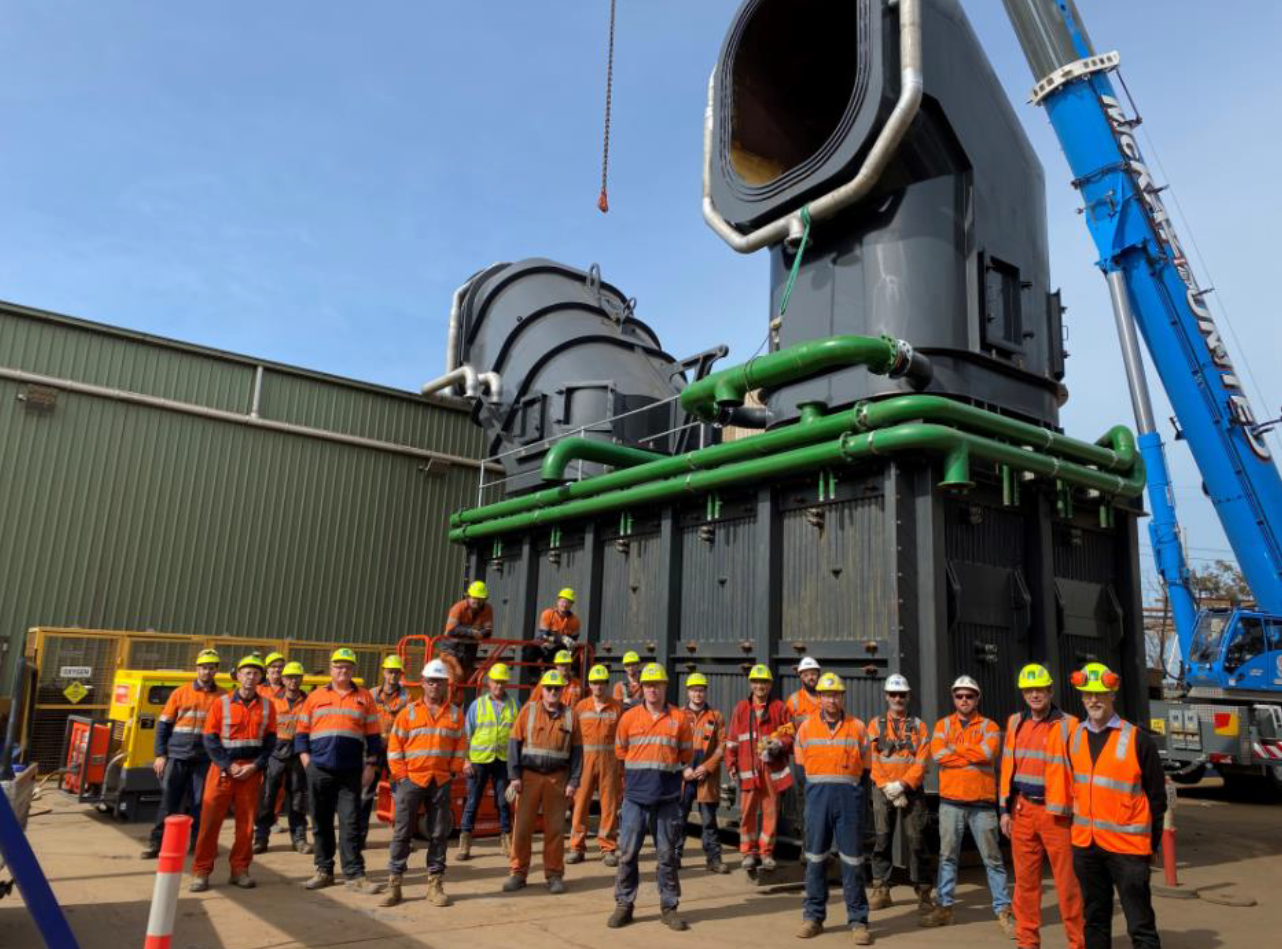
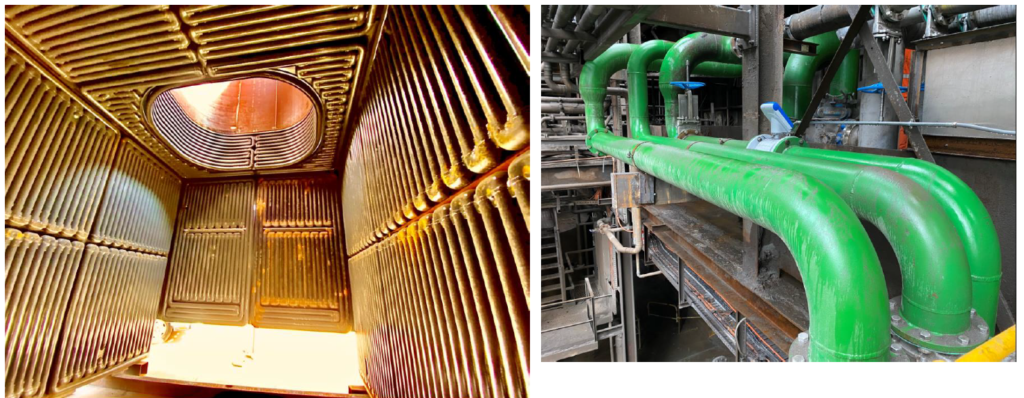
The only thing accelerating faster than the pandemic was the adoption of new technology.
Physical distancing and introducing shift bubbles meant running regular site tours for new employees and contractors was difficult.
Understanding the importance of showcasing our operations to new starters and contractors, Angie Stokes and Mostafa Haman from the SIMEC Mining developed an online tour by filming themselves in various parts of the pelletising plant in Whyalla and the fixed plant at our Southern Middleback Ranges site explaining how the facilities work.
Filmed using a mix of mobile phone footage and drone footage, the videos are a terrific way to show people what happens on site, to explain the complexity of the process, increase awareness of how to get around and operate safely. Importantly they make learning about our business convenient and accessible, even before new recruits arrive on site
In a post-COVID world, the virtual site tours will even serve to remove cost and complexity from the business but also are a much more engaging and effective way for all of our people to get kick start in understanding our business right from when they first join us.
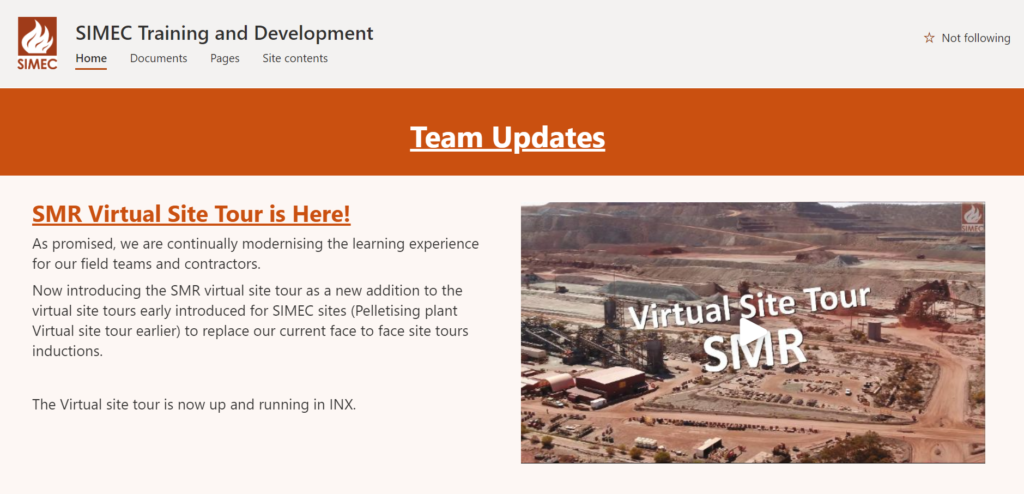
The landing page for the site tour sits within the SIMEC team’s Training and Development portal.
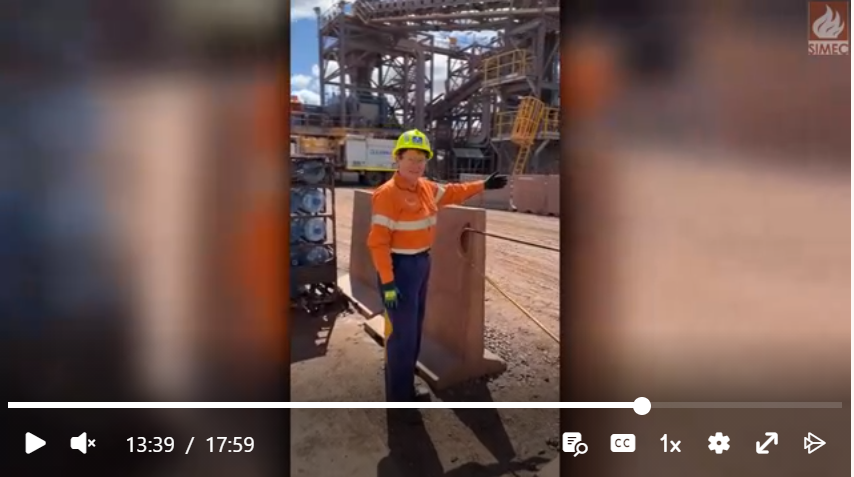
The video is a mix of employees explaining how parts of the site work, and drone footage.
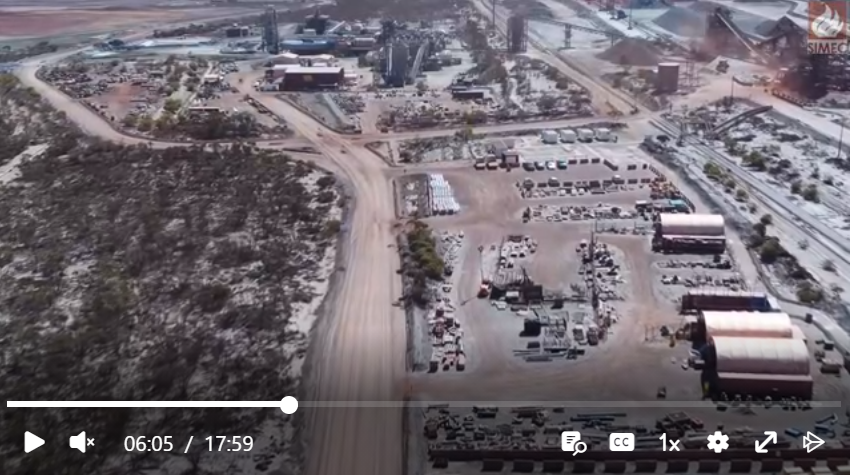
The Women’s Network was created in October last year following on from employee feedback.
Female participation in the business was raised as a concern in the 2020 Australian employee engagement survey, in employee exit interviews, and in feedback from employees more generally.
Shockingly, retention rates of women were critically low, with only 1 in 3 opting to stay beyond their 12-month anniversary.
After taking on an internal self-audit to look for opportunities to make working in the business more attractive for women, Liz Macri came up with the concept of a ‘Women’s Network’, receiving complete endorsement from her Executive General Manager, Michael Negri, who endorsed the initiative as a fundamental priority for the sustainability and performance of the business, and for their employee value proposition.
The team clearly understood that in order to be a sustainable employer of choice, operating for the long-term, then their workforce needed to represent the diverse population of the community they serve.
The Women’s Network was launched with great success. More than a dozen Network Champions have now been identified across the country, and they will help provide advice, guidance, and support with developing Network activities and delivering on the goals of the group.
Five months in, more than 100 members have joined the Network, and the leaders have now signed a partnership with the National Association of Women in Operations (NAWO) to ensure the Network has access to training and education programs to support increasing female participation in traditionally male industries.
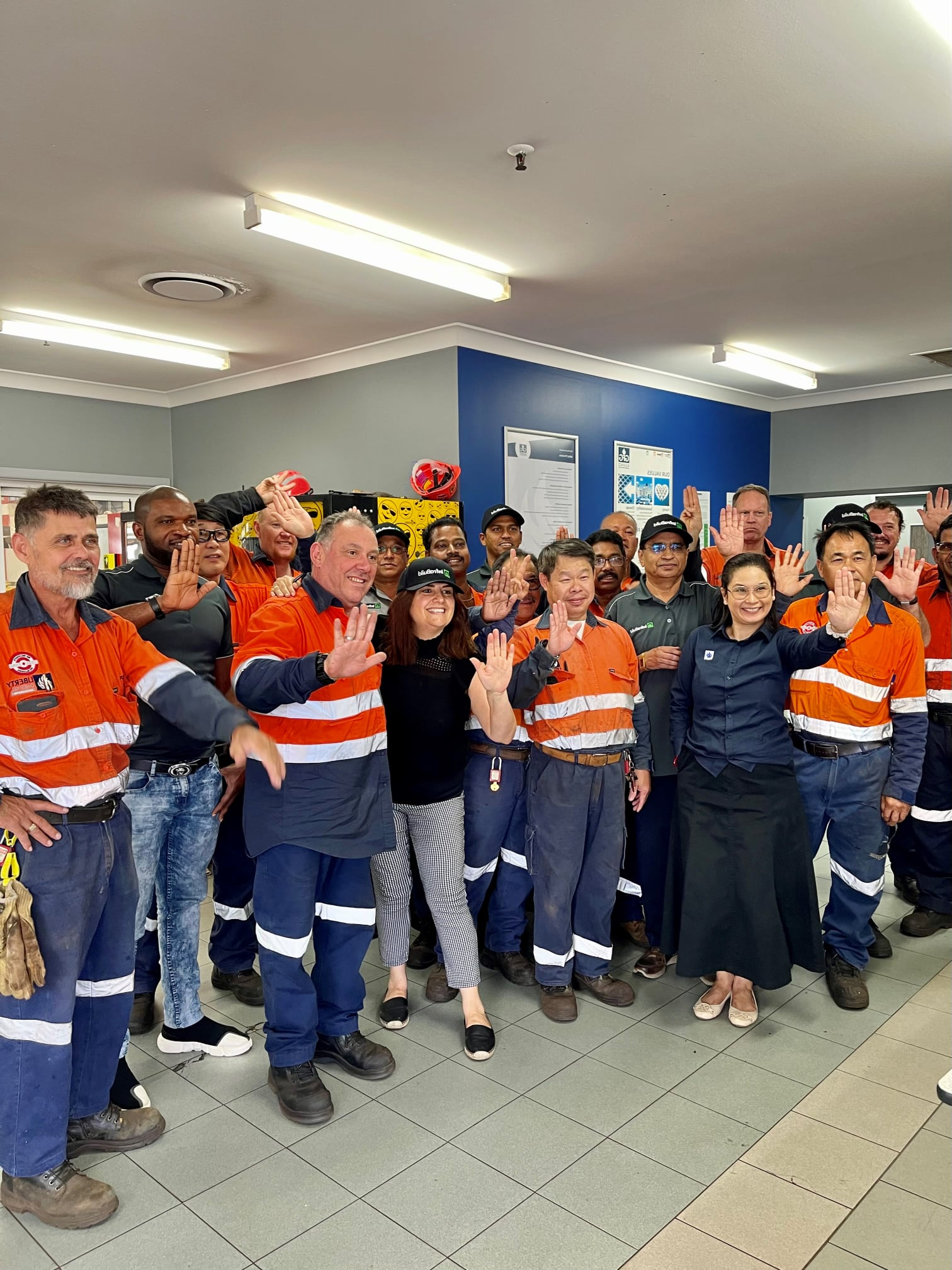
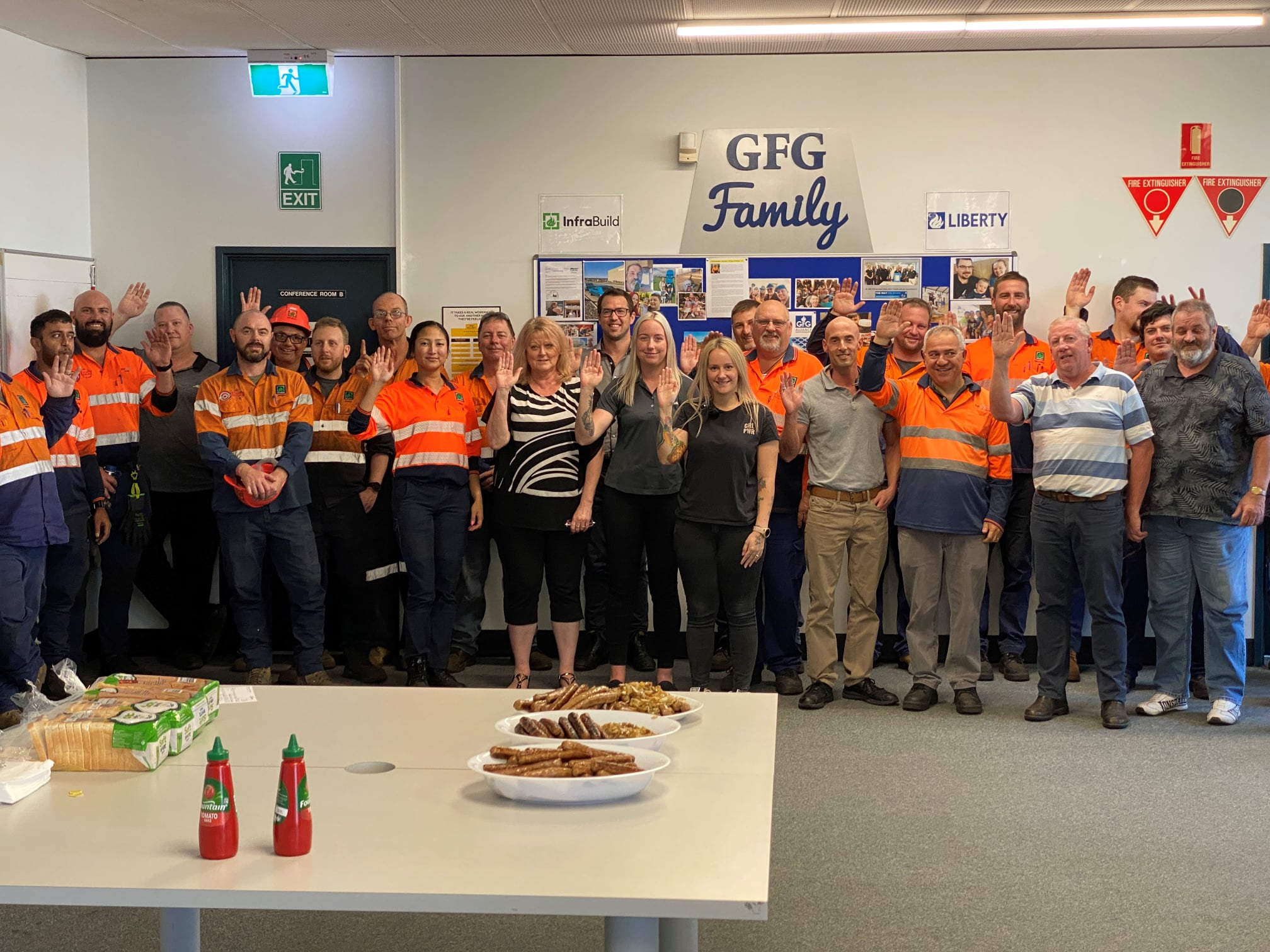
Leave A Reply